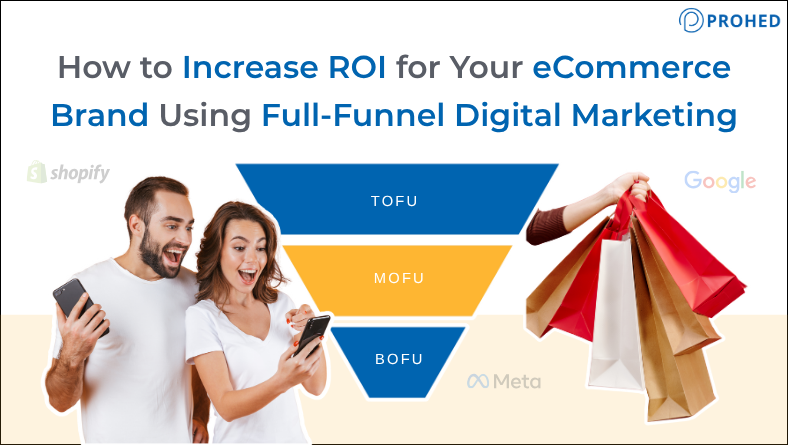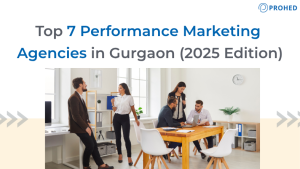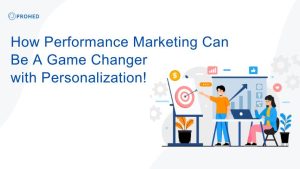In today’s competitive digital landscape, eCommerce brands can no longer rely solely on bottom-funnel tactics like discounts and retargeting ads to drive sales. While those methods can yield quick wins, they often result in diminishing returns over time.
To truly scale sustainably and increase your Return on Investment (ROI), you need to adopt a full-funnel digital marketing strategy, one that nurtures your audience from awareness to conversion and beyond.
In this blog, we’ll break down how you can align your digital marketing efforts across the entire customer journey and ultimately grow your brand’s ROI.
What Is Full-Funnel Digital Marketing?
Full-funnel marketing refers to a strategy that engages customers at every stage of their journey: awareness (top of funnel), consideration (middle of funnel), and conversion (bottom of funnel). Instead of focusing only on sales-driven ads, you build a structured approach to guide users through each stage of decision-making.
Benefits of Full-Funnel Marketing:
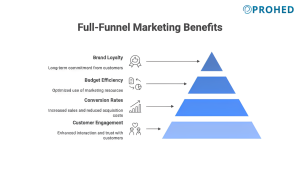
- Improved customer engagement and trust
- Higher conversion rates and lower CAC (Customer Acquisition Cost)
- More effective use of the marketing budget
- Long-term brand loyalty
When your marketing channels and messaging align with the funnel stages, your chances of converting a cold prospect into a loyal customer increase drastically, thereby improving your ROI.
Understanding ROI in eCommerce
ROI (Return on Investment) in eCommerce is a performance metric that measures the profitability of your marketing, operations, or overall business activities compared to the cost involved.
In simple terms, it answers the question:
“For every ₹1 I spend on my eCommerce business, how much do I get back in profit?”
For e-commerce brands, ROI can be calculated for the business as a whole or for specific campaigns like Meta Ads, Google Shopping, or influencer marketing. It’s not just about revenue, it’s about how efficiently you convert spending into profit.
How ROI Is Calculated?
The basic formula for ROI is:
ROI(%)= Net Profit / Total Investment × 100
Where:
- Net Profit = Total Revenue – Total Costs
- Total Investment = The amount spent on the activity you’re measuring (ad spend, marketing budget, operations cost, etc.)
Example:
Let’s say you run a month-long Meta Ads campaign for your online clothing store:
- Ad Spend: ₹50,000
- Revenue Generated: ₹1,20,000
- Cost of Goods Sold (COGS): ₹40,000
- Other Expenses (shipping, payment gateway, etc.): ₹10,000
Net Profit = ₹1,20,000 – (₹40,000 + ₹10,000 + ₹50,000)
= ₹1,20,000 – ₹1,00,000 = ₹20,000
ROI = ₹20,000/ ₹50,000 × 100 = 40%
This means you earned ₹1.40 for every ₹1 spent on ads.
The eCommerce Funnel Breakdown: Stages That Drive ROI
Let’s walk through each funnel stage and the strategies you should implement:
1. Top of the Funnel (TOFU): Awareness
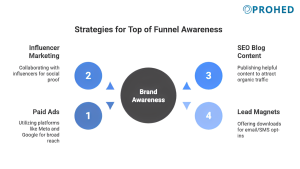
This stage is about building visibility and brand recall. Your goal is not to sell immediately, but to attract and educate your target audience.
TOFU Tactics:
- Paid Ads: Use Meta, YouTube, and Google Display for broad reach with engaging creatives. Focus on storytelling and brand values.
- Influencer Marketing & UGC: Collaborate with micro-influencers or customers to build social proof.
- SEO Blog Content: Publish helpful content like “Best Skin Care Tips for Oily Skin” (if you sell skincare) to attract organic traffic.
- Lead Magnets: Offer downloadable guides or giveaways in exchange for email/SMS opt-ins.
Pro Tip: Use interest-based targeting on platforms like Instagram, Facebook to reach new, but relevant audiences.
2. Middle of the Funnel (MOFU): Consideration
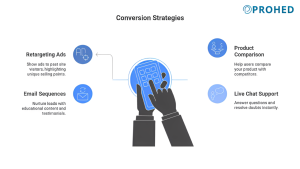
At this stage, your audience is problem-aware and exploring options. Now it’s your job to prove why your brand is the best choice.
MOFU Tactics:
- Retargeting Ads: Serve ads to people who visited your site but didn’t convert. Showcase USPs or bestsellers.
- Product Comparison Pages: Help users evaluate your product versus competitors.
- Email Sequences: Send educational content, reviews, and testimonials to nurture leads.
- Live Chat & WhatsApp: Answer product-related questions and clear doubts in real-time.
Pro Tip: Build segmented email flows for browsed products, categories, and engaged users.
3. Bottom of the Funnel (BOFU): Conversion
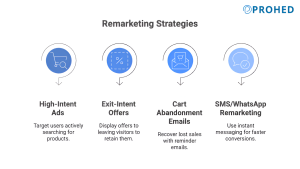
Now your leads are hot. They’re ready to buy—so give them the final push.
BOFU Tactics:
- High-Intent Search & Shopping Ads: Bid on branded and product-specific keywords.
- Exit-Intent Offers: Show popups offering discounts or free shipping if they’re about to leave.
- Cart Abandonment Emails: Send reminders with urgency, discounts, or reviews to recover sales.
- SMS/WhatsApp Remarketing: Instant messaging drives quicker actions and conversions.
Pro Tip: Personalize your offers based on user behavior to maximize conversion chances.
Why Most eCommerce Brands Struggle with ROI
Despite spending thousands on ads, many brands struggle with stagnant or declining ROI. Here’s why:
- Too much focus on BOFU: They skip TOFU/MOFU and target only bottom-funnel prospects, leading to higher CAC.
- No storytelling: Without emotional connection or brand differentiation, you become just another product.
- Disconnected touchpoints: Marketing feels disjointed when different channels don’t speak to each other.
- Limited creative testing: One-size-fits-all ads lead to ad fatigue and lower engagement.
Full-Funnel Strategy in Action (Example)
Let’s say you own an e-commerce skincare brand.
Here’s how a full-funnel journey might look:
| Funnel Stage | Strategy | Example |
| TOFU | Instagram Ads + Blog | Video Ad on “Summer Skincare” + SEO Blog “Why Vitamin C is a Must” |
| MOFU | Retargeting + Email | Product demo reel + Testimonials via email flow |
| BOFU | Cart Recovery + WhatsApp | Message: “Still thinking? Get 15% off, valid for 24 hours” |
By targeting the same user with relevant messaging across platforms, you gradually warm them up to purchase.
Top Tools to Execute Full-Funnel Marketing
To build and track a full-funnel strategy, use the following tools:
| Funnel Stage | Tools |
| TOFU | Meta Ads, Google Display, YouTube, Pinterest, Blogs (WordPress) |
| MOFU | Klaviyo, Mailchimp, Hotjar, Typeform, Instafeed, Trustpilot |
| BOFU | Google Shopping, Tidio/WhatsApp, CartHook, PushOwl, Razorpay RTO insights |
Key Metrics to Track Funnel-Wise ROI
To accurately measure ROI, track funnel-specific metrics:
| Funnel Stage | Metrics |
| TOFU | CPM, Reach, Video Views, CTR |
| MOFU | Session Duration, Email Open/Click Rates, Add to Cart Rate |
| BOFU | Conversion Rate, ROAS, CAC, AOV |
Also consider blended ROAS (total revenue ÷ total ad spend) and MER (Marketing Efficiency Ratio) for holistic performance.
Tips to Maximize ROI at Every Funnel Stage
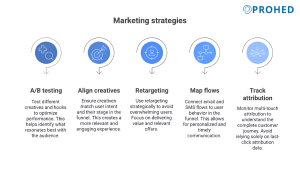
- A/B test creatives and hooks regularly
- Align creatives to user intent and stage
- Use retargeting wisely—don’t overkill
- Map email and SMS flows to funnel behaviour
- Track multi-touch attribution (not just last click)
Pro Tip: Focus on long-term CAC payback, not just immediate ROAS.
Full-Funnel vs. Channel-Specific Marketing
| Approach | Pros | Cons |
| Full-Funnel | Sustainable growth, lower CAC, better brand recall | Takes time, requires coordination |
| Channel-Specific (e.g., only Google Ads) | Quick wins | Expensive in the long run, low brand loyalty |
To win in 2025 and beyond, a full-funnel marketing plan isn’t optional; it’s essential.
Conclusion
Building a high-ROI eCommerce brand doesn’t come from one ad or one campaign. It’s the result of a well-executed full-funnel strategy, where awareness, consideration, and conversion work in harmony.
By mapping your customer journey and aligning your messaging across channels, you can:
- Lower your CAC
- Improve retention and AOV
- Boost ROI across the board
